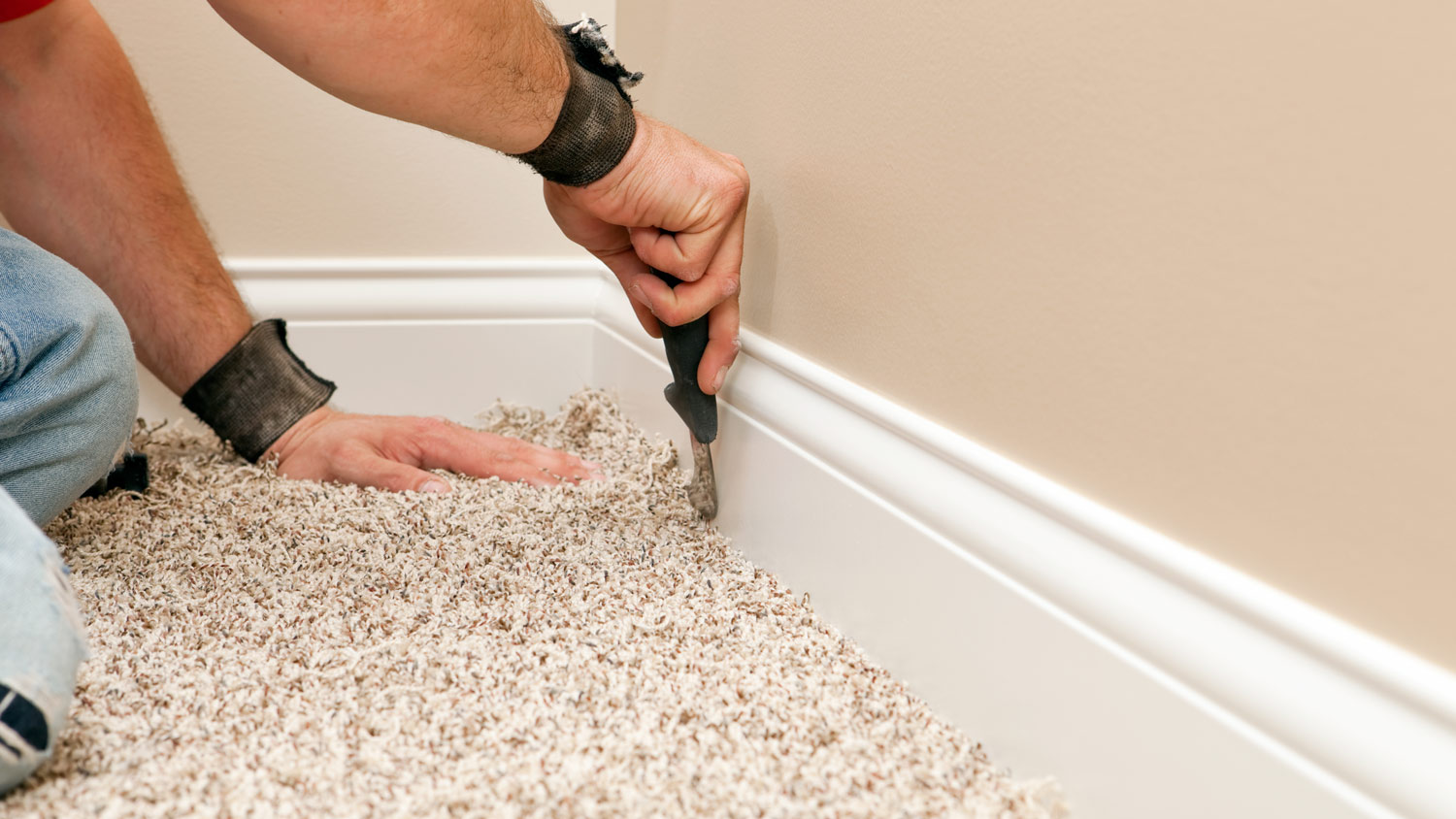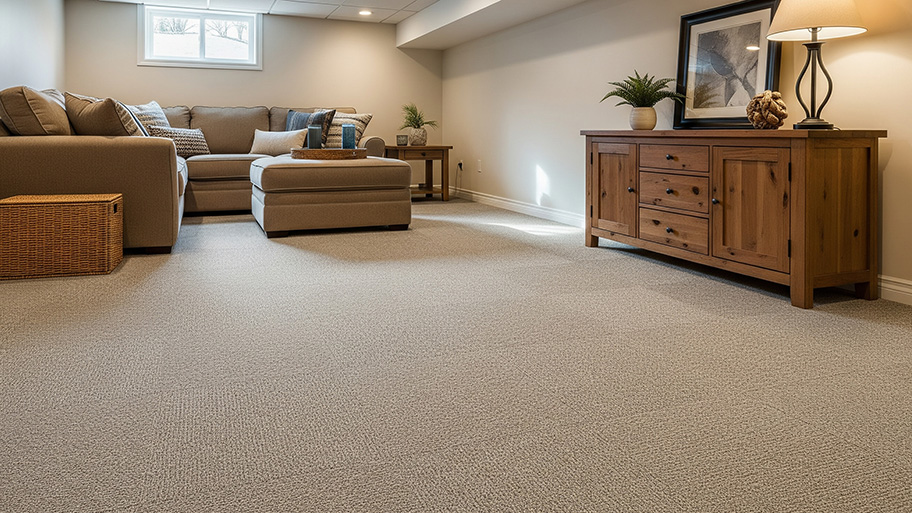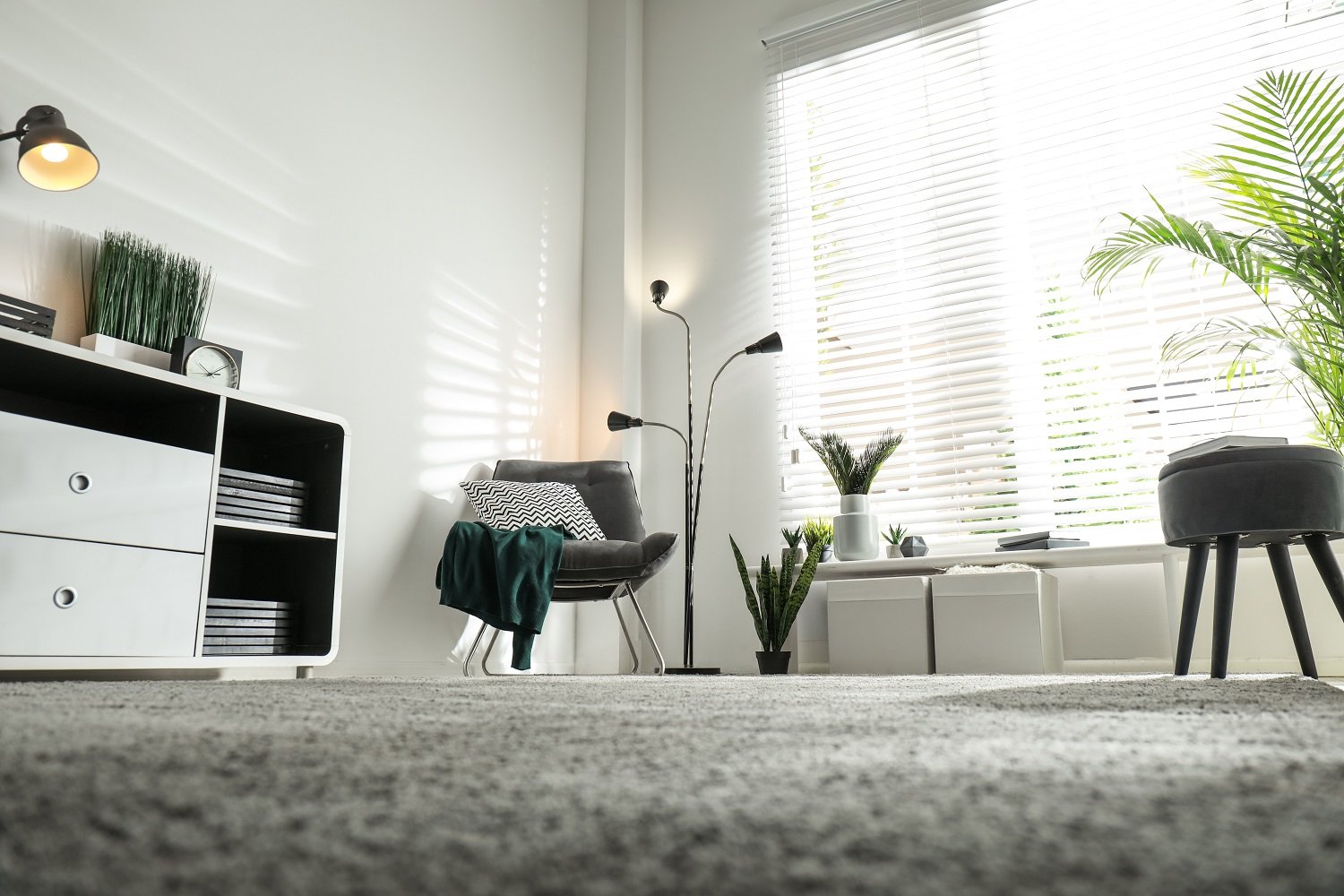
Get a clear estimate for carpet repair cost. Learn what impacts pricing, compare repair types, and find ways to save on your next carpet project.
How to win the war against carpet stains—or simply give a room a new look


Carpet dyeing requires special dye and some dedication to the process.
Dyeing the carpet can give it a fresh look and revitalize any faded spots.
Carpet always has to be dyed a similar or darker color than the original color.
Carpet dye jobs last about a year before they need to be redone.
Whether your living room carpet is starting to look a little drab or has been marred by stains from this past summer’s big soiree (mustard and red wine?!), you may want to consider carpet dyeing as a way to revive your carpet’s appearance and cover up those eyesores. Here are all the details you need to know before you decide whether or not to dye your carpet.
Carpet dye is a product that is formulated specifically for dyeing carpet. Carpet dye must be mixed with the proper chemicals and pH stabilizer in order to create the right dye bath. It also has to be mixed with hot water and kept hot while you are dyeing the carpet, so you should work in small batches with identical measurements to ensure the water stays hot throughout application.
You may already have a reason in mind as to why you wish to dye your carpet a new color, but here are a few more to consider:
Save money: It costs an average of $180 to tear up old carpet. That plus the cost to install new flooring means that dyeing the existing carpet can save you a substantial amount of money. Carpet dyeing is much more affordable than installing new carpet, costing only about a third of a new installation ($586 vs. $1,683).
Cover unsightly stains: No matter how many times you get your carpet cleaned, some stubborn stains might refuse to budge. You may also have a very large and very noticeable stain that you want to cover up.
Original color is fading: The sun pouring into your living room may be a boon to your potted plants, but it could be fading or bleaching the original color of your carpet.
Planning to sell your house: Since a dye job can cover stains and refresh a room, it is a good choice if you are getting ready to sell your home and want it to be show-ready, especially if you need a quick turnaround or are working on a tight budget.
Your carpet is young: A good quality carpet should last 10 to 15 years, so if your carpet is relatively new but the victim of a bad stain, a dye job is a way to give it new life without ripping it out.
You are redecorating: You watched Marie Kondo’s show and decided what sparks joy—an entirely new color scheme for your living room. But if the carpet does not work with your interior design dream, dye it for a fresh start.

Here is everything you need to keep in mind before you pick out your carpet’s new color, learn how to dye your carpets, and start pulling furniture out of the living room.
You may have bottles of indigo dye left over from last year’s shibori experiment, but do not jump to dye your carpet blue with it. Carpet dyes are specially formulated acid dyes that must be kept hot. You should only work with a small amount of dye at a time to keep it at a high temperature and maximize its effectiveness.
You should not dye a dirty carpet, so either have a professional carpet cleaning service do the task for you or tackle the vacuuming yourself. After hoovering up any dirt, shampoo the carpet using a carpet cleaner. You can dye the carpet relatively soon after the carpet is cleaned because dye adheres best to damp carpet.
Before dyeing your carpet, you should move all furniture out of the room. In addition, if you have baseboards, remove them as well (gently, using a pry bar) to prevent them from being dyed the same color as the carpet. If you do not have baseboards, make sure to cover the edges of the walls, so they are protected from overspray. Once the dye has been applied, you will need to wait 24 hours for it to dry before replacing the baseboards and furniture.
Only carpet made from wool, silk, or nylon fibers can be dyed. In addition, carpets that are stain resistant or very thick are not good candidates for dyeing. If you do not know what material your carpet is made out of, you can test it by burning a small sample (be careful!). If it burns slowly, smells like burning hair, and leaves a dark ash, it is wool. Nylon melts when lit and leaves a lighter-colored, hard, plastic-like bead. It may also smell like celery (weird, we know). If you still are not sure, a carpet dyeing professional can tell you what material you are working with.

Dyeing a carpet takes a few days and some patience, but it will give your carpet new life by covering stains and discoloration. Here is the best way to dye a carpet.
Remove all furniture from the room.
Gather your supplies:
Carpet dye
Container for mixing dye
Sprayer (a spray bottle or garden sprayer will work)
Stiff bristled brush
Rubber gloves
Thoroughly vacuum and clean the rug. You may want to hire a professional carpet cleaning company, or you can rent a carpet cleaner from a local hardware or home improvement store.
Let the floor dry a little, but make sure it is slightly damp because damp carpet absorbs carpet dye better than dry carpet. If the carpet is completely dry, spray a little bit of water to dampen it.
Mix the dye according to the manufacturer’s directions using hot water.
Spray the dye onto the carpet in small sections.
Work the dye into the carpet with a stiff bristled brush. You can also use your steamer for this step.
Do as many coats as needed according to the manufacturer’s directions or based on the visual appearance.
Let the carpet dry thoroughly before moving the furniture back in.
If you need to give your carpet new life, carpet dyeing is a candidate for a DIY project, but you will probably have to buy some supplies. Whatever you buy will likely be used up during the process, though you might be able to clean the stiff bristled brush for use with other things. The tools and supplies will cost you between $100 and $200, but if you already have the tools, you may only need to buy a carpet dyeing kit, which can cost between $50 and $100. Professional carpet dyeing can cost around $585.
From average costs to expert advice, get all the answers you need to get your job done.

Get a clear estimate for carpet repair cost. Learn what impacts pricing, compare repair types, and find ways to save on your next carpet project.

Not only are carpet tiles easier to install than carpet, but they’re often more affordable. So, how much does carpet tile installation cost? Let’s take a look.

The average range to remove carpet costs $120 to $720. Contractors base carpet removal costs on square footage, home location, and installation type.

Carpet repair, refastening, or stretching can make an old carpet look new again. Consider these questions when requesting quotes from carpet repair pros.

Learning how to stretch carpet is a great way to protect your investment and keep everything tidy. Here are the steps to successfully restretch carpet on your own.

Find out the average berber carpet installation cost, key price factors, and expert tips to help you budget for your new carpet project.